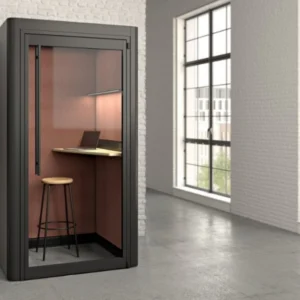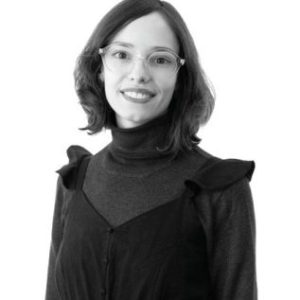The architect behind the first Jewish school in Berlin, Zvi Hecker, has built up an architectural collection in the city as a mark of respect for his heroes. Here he explains how it began and how it has grown and evolved over time.
In retrospect, my collection of city apartments in Berlin grew as if by itself. Until recently, though, I have neither questioned the origins of the idea, nor traced the path of its gradual progress. My family lives in the apartments I designed in Israel: Dubiner House from the early Sixties and Spiral House from the Eighties. I never considered these as anything more than the natural choice of accommodation for our family. The situation changed quite radically in 1991 when I won a competition to design the Jewish school in Berlin. It became clear that the scheme stood a better chance of being built if I was based in the city, as it had to conform to German building codes, and there was also considerable resentment towards the design. It was then that I established an office in Berlin, in addition to my studio in Tel Aviv.
Living and working in Berlin I became acquainted with the works of 20th-century architects for the first time. These included projects that I had previously only been familiar with from plans and photographs, such as the Stadtsbibliothek by Hans Scharoun. Such a masterpiece must be experienced first-hand in order to see the architect’s unique mastery of space, animated by his Athenian spirit. Unlike the public buildings open daily in Berlin, it is impossible to visit a housing project by Scharoun, or any other Berlin architect. The only way would be to live in one. Recognising this must have triggered my interest in what has developed into an architectural collection.
Berlin’s significance and uniqueness is well known and quite evident, but what is particularly special is the amount and quality of modern architecture by the most prominent architects of the 20th century. Among others, Alvar Aalto, Le Corbusier and Oscar Niemeyer were invited to build for the Interbau Exhibition of Modern Architecture in Berlin in 1957. In between the two world wars, residential complexes and low-cost housing were built to the designs of Bruno Taut, Hugo Häring, Walter Gropius, Mies van der Rohe, Erich Mendelsohn, Scharoun and many others.
During my student years, some of these architects were great heroes of mine, including the likes of Mendelsohn, who left Nazi Germany to build in Palestine. My journey 50 years later was in the opposite direction, from Israel to Berlin to build the first Jewish school after the Holocaust.
To acknowledge my debt to the generations of architects who have inspired me, I followed the example of painters who treasured paintings by artists they admired in their ateliers. Though you can’t put one apartment into another, the idea didn’t seem so erroneous. It is also a means of respect, long overdue, for the work of city architects, civil engineers, and many bureaucrats who made it possible for so many good architects to contribute to the architecture of Berlin.
The first opportunity presented itself when the decision was made to transfer the ownership and the administration of some of Berlin’s housing condominiums to private investors. At the beginning of 2000 I found apartments in the Niemeyer and Aalto buildings; both built in Tiergarten, the ‘Central Park’ of Berlin, as part of the 1957 Interbau Exhibition.
From 2003 my own work kept me busy, but in 2007 I purchased an apartment in a less well-known housing project in Wedding, north Berlin, designed by Mies in 1927, and last year an apartment in a 1928 block by Mendelsohn became available. Located in Cicerostrasse, it is one of the most elegant apartment buildings in Berlin, not far from Mendelsohn’s famous Universum Cinema on Kurfürstendamm. I am hoping to buy an additional apartment in the housing block by Scharoun on Kaiserdamm.
As I accumulated these properties, I have been continuously amazed by the enormous difference between the high value of the works of painters and sculptors in contrast to that of great architects. The art market seems to be run by skillful manipulators for well- calculated profits, while there remains a total disinterest in the work of architects, which should have an equivalent commercial value. Collecting a sample of architects’ work has been a way of correcting this inequality.
In starting this collection, my ignorance in matters of finance has been the greatest advantage. I was unaware of the fact that strict rent control in Berlin made profit on apartment investments unlikely. Also, many of the tenants that live in the buildings designed by Niemeyer have done so for years, some since the 1950s, enjoying low rent and the right to stay. The same is true of the occupancy of Aalto’s apartment building. Unfamiliar with commercial matters, I have been guided by my intuition and my belief in the importance of architecture as the best instrument of culture.
Great architecture has a civilizing effect on society, and also provides a solid base for future generations to learn from and build upon. As such, architecture must be regarded as a long-term investment, a kind of mega-economy. Its success isn’t measured by monthly payments, but by the life cycle of generations.





